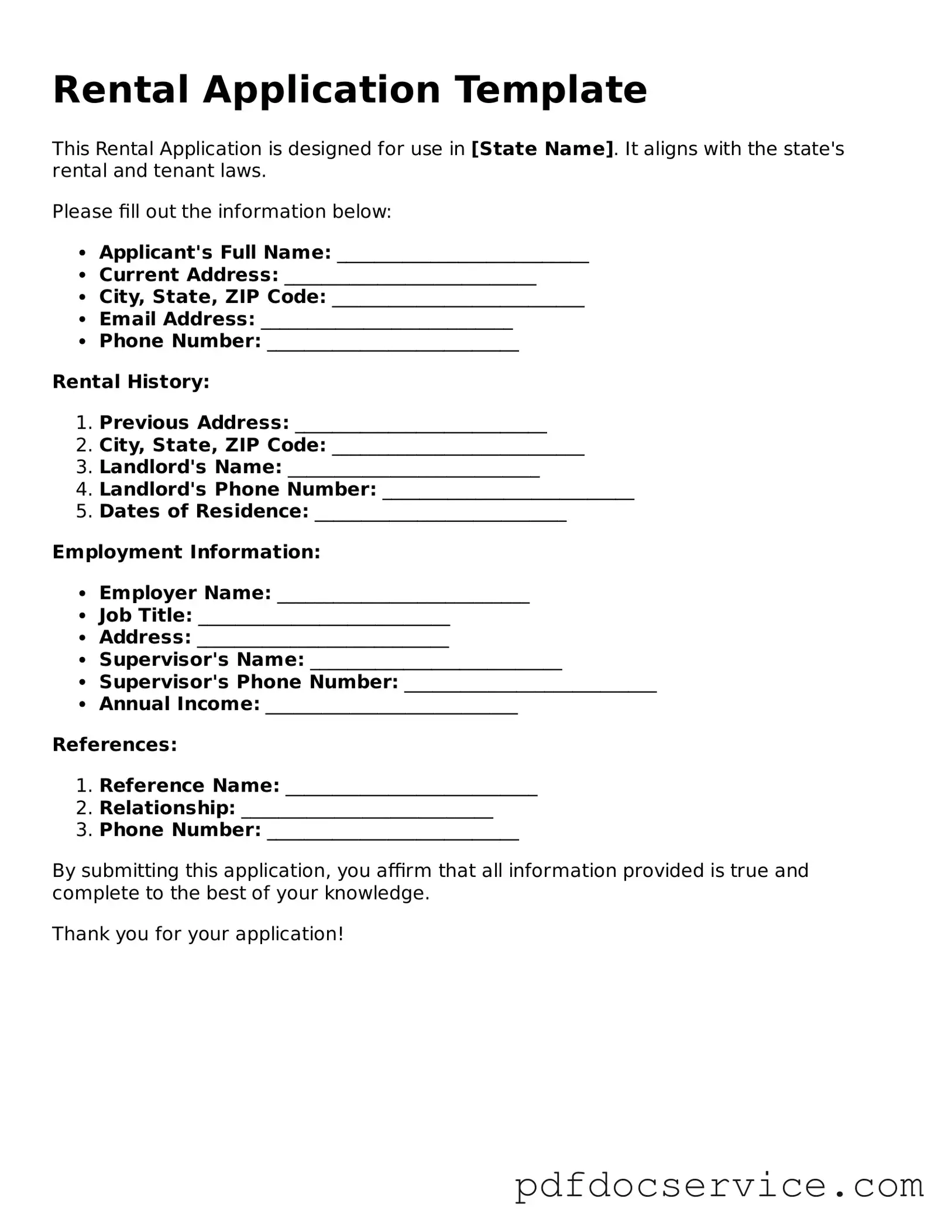A Rental Application form is a document that potential tenants fill out to apply for a rental property. It collects essential information about the applicant, including personal details, rental history, employment information, and references. This helps landlords assess the suitability of applicants for their properties.
Why do I need to fill out a Rental Application?
Filling out a Rental Application is necessary for landlords to evaluate your background and financial stability. This process helps ensure that you can meet the rental obligations and that you will be a responsible tenant. It also helps protect landlords from potential issues that may arise with tenants.
A Rental Application usually requires the following information:
-
Personal details: name, address, phone number, and email
-
Employment information: current employer, position, and income
-
Rental history: previous addresses, landlord contact information, and duration of stay
-
References: personal or professional contacts who can vouch for you
-
Background information: consent for credit and background checks
Landlords are required to handle your personal information with care. Most landlords will have policies in place to protect your data. They should only use your information for the purpose of evaluating your application. Always ask about their privacy policies if you have concerns.
What happens after I submit my Rental Application?
After submission, the landlord or property manager will review your application. They may conduct background checks, contact your references, and verify your employment. This process can take anywhere from a few days to a week, depending on the landlord's procedures.
Can I be denied after submitting my Rental Application?
Yes, a landlord can deny your application for various reasons. Common reasons include insufficient income, poor rental history, or negative background check results. If denied, you may request a reason for the decision. It's important to understand your rights regarding application denials.
Is there a fee for submitting a Rental Application?
Many landlords charge an application fee to cover the costs of background checks and processing. This fee can vary widely, so it's important to ask about it upfront. Be sure to confirm whether this fee is refundable if your application is denied.
How can I improve my chances of being approved?
To improve your chances of approval, consider the following tips:
-
Provide accurate and complete information on your application.
-
Include strong references who can speak positively about your character.
-
Demonstrate stable employment and sufficient income.
-
Be prepared to offer a larger security deposit if necessary.
What if I have a poor rental history?
If you have a poor rental history, it's still possible to find a rental. Be honest on your application about your past. Consider providing explanations for any issues, such as financial hardships. Offering additional references or a co-signer may also help strengthen your application.
Can I appeal a Rental Application denial?
Yes, you can often appeal a denial. If you believe the decision was unfair or based on incorrect information, contact the landlord to discuss your concerns. They may be willing to reconsider your application if you provide additional information or clarification.
